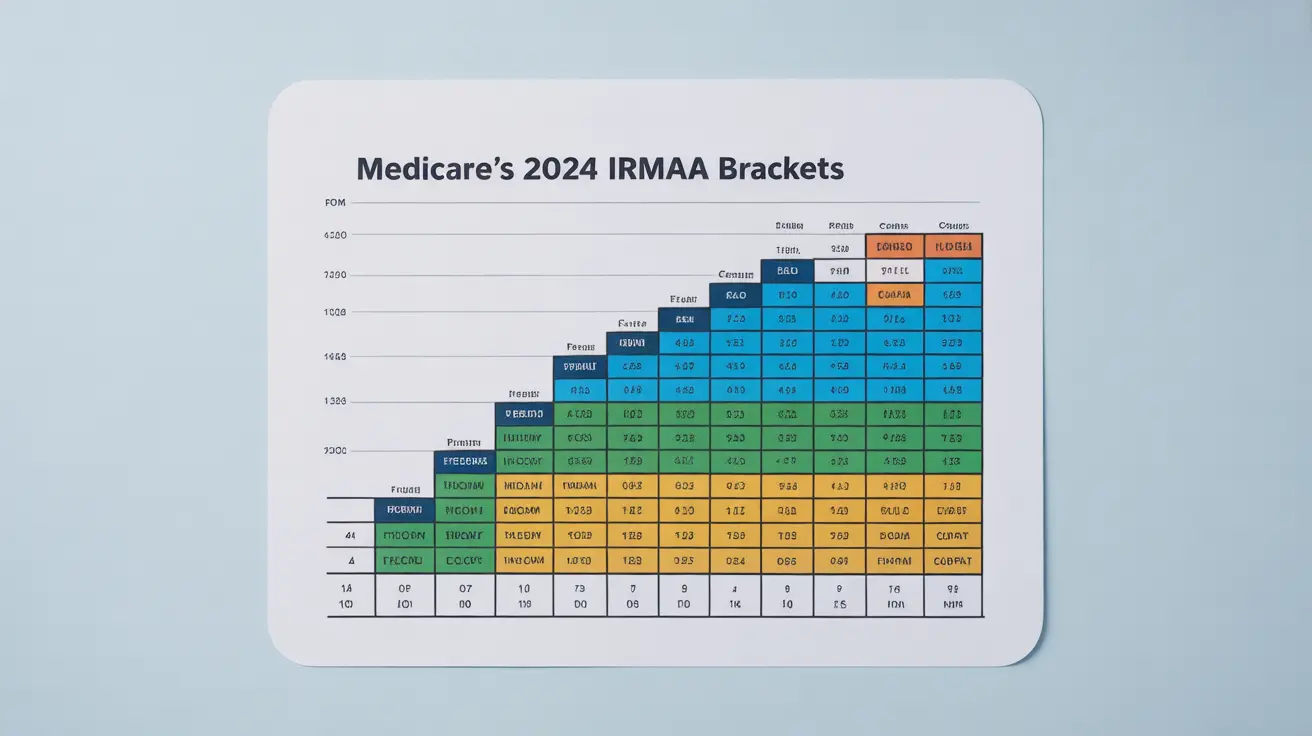Understanding Medicare's Income-Related Monthly Adjustment Amount (IRMAA) is crucial for beneficiaries planning their healthcare costs in 2024. IRMAA affects both Medicare Part B and Part D premiums, potentially increasing your monthly payments based on your income level. This comprehensive guide breaks down the 2024 IRMAA brackets and helps you understand how these adjustments might impact your Medicare expenses.
Understanding IRMAA and How It Works
IRMAA is an additional amount that higher-income beneficiaries must pay on top of their standard Medicare Part B and Part D premiums. The Social Security Administration (SSA) determines your IRMAA status by reviewing your modified adjusted gross income (MAGI) from your tax returns from two years prior to the current year.
2024 IRMAA Income Brackets and Premium Adjustments
Individual Tax Filers
For individuals filing single tax returns, the 2024 IRMAA brackets are structured as follows:
- MAGI $97,000 or less: Standard premium only
- MAGI $97,001 - $123,000: First tier adjustment
- MAGI $123,001 - $153,000: Second tier adjustment
- MAGI $153,001 - $183,000: Third tier adjustment
- MAGI $183,001 - $500,000: Fourth tier adjustment
- MAGI above $500,000: Highest tier adjustment
Married Filing Jointly
Couples filing joint tax returns face different IRMAA thresholds:
- MAGI $194,000 or less: Standard premium only
- MAGI $194,001 - $246,000: First tier adjustment
- MAGI $246,001 - $306,000: Second tier adjustment
- MAGI $306,001 - $366,000: Third tier adjustment
- MAGI $366,001 - $750,000: Fourth tier adjustment
- MAGI above $750,000: Highest tier adjustment
How IRMAA Is Calculated and Applied
The Social Security Administration automatically calculates your IRMAA based on the most recent tax return information provided by the IRS. For 2024 determinations, they typically use your 2022 tax return information. The additional amount is added to your standard Medicare Part B and Part D premiums, and these adjustments are typically deducted from your Social Security benefits if you receive them.
IRMAA Appeals and Life-Changing Events
If you experience a life-changing event that significantly reduces your income, you may be eligible to appeal your IRMAA determination. Qualifying life-changing events include:
- Marriage or divorce
- Death of a spouse
- Work reduction or stoppage
- Loss of pension income
- Loss of income-producing property due to a disaster
- Settlement or retirement account loss
Frequently Asked Questions
What are the 2024 income thresholds for Medicare IRMAA and how do they affect my Part B and Part D premiums? The 2024 IRMAA thresholds start at $97,000 for individual filers and $194,000 for joint filers. Your premiums increase progressively through five different tiers based on your income, with higher incomes resulting in larger premium adjustments for both Part B and Part D coverage.
How is IRMAA calculated based on my tax returns from two years prior? The SSA uses your modified adjusted gross income (MAGI) from your tax return filed two years ago (2022 for 2024 IRMAA determinations) to calculate your adjustment amount. This includes your adjusted gross income plus any tax-exempt interest income.
Can I appeal or reduce my IRMAA surcharge if my income decreases after the tax year used for calculation? Yes, you can file an appeal using Form SSA-44 if you've experienced a life-changing event that reduces your income. You'll need to provide documentation of the event and your new expected income.
What are the IRMAA premium surcharges for married couples filing jointly versus those filing separately in 2024? Married couples filing jointly have higher income thresholds before IRMAA applies, starting at $194,000. Those filing separately face more restrictive thresholds and potentially higher surcharges, with adjustments beginning at much lower income levels.
How have the IRMAA brackets changed for 2024 compared to previous years and what does that mean for Medicare costs? The 2024 IRMAA brackets have been adjusted for inflation, with slight increases in the income thresholds compared to 2023. This means some beneficiaries may fall into a lower bracket and potentially pay less in IRMAA surcharges.




